Fetal Growth Examples
The panels below illustrate some of the issues which have arisen during discussion
and training sessions, specifically relating to normal, static, slow, plots above the 90th centile and excessive
growth.
For further information, please
contact us.
Normal Growth
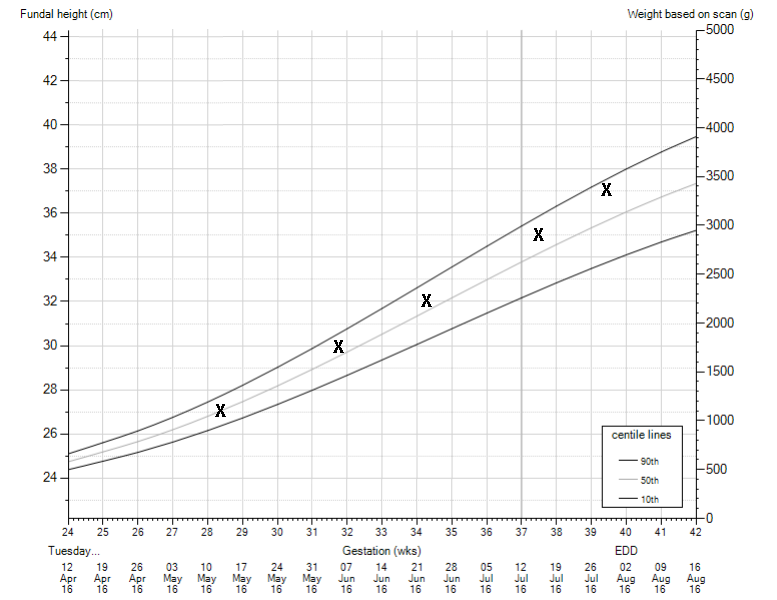
Normal variability in measurement means that the slope will alter from one measurement to another. We recommend using the 90th and 10th centile lines as the upper and lower limits to define ’normal growth’, and visual assessment as to whether the plotted sequential measurements follow a curve, the slope of which is within the 90th and 10th centile line ‘slope limits’. This applies to measurements of fundal height as well as estimated fetal weight (EFW). The overall slope of the curve should not be static (see static growth example) and becomes abnormal if the slope falls away in subsequent measurements (see slow growth example).
1st Plot Below the 10th Centile
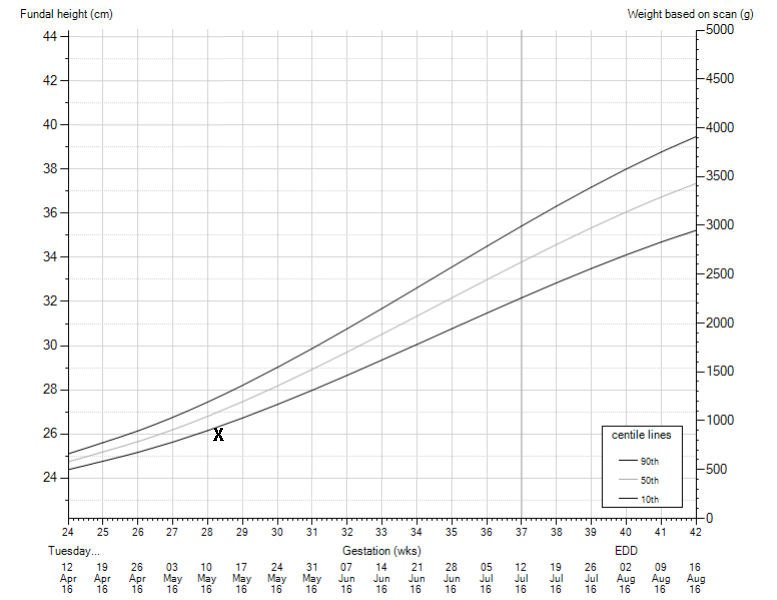
The first fundal height plot represents the initial assessment as well as the baseline for subsequent measurements, which are interpreted on the basis of the slope or velocity of growth.
If the first fundal height plot is below the 10th centile, this warrants a referral for an ultrasound assessment. An estimated fetal weight (EFW) should be calculated and plotted back onto the customised growth chart. Liquor volume and umbilical artery Doppler should also be measured.
If the EFW is between the 10th and 90th centiles, clinicians and mother can be reassured, and surveillance for fetal growth can return to fundal height measurements, with the subsequent plot trajectory continuing from the initial measurement. Subsequent fundal height measurements under the 10th centile do not require another referral for scan unless the trajectory of growth changes (see slow and/or static growth)
If the EFW is below the 10th centile but normal liquor volume and normal umbilical artery Doppler, obstetric review is needed and a repeat ultrasound should be carried out in 2 weeks.
If the EFW is below the 10th centile with oligohydramnios and/or abnormal umbilical artery Doppler, this requires an immediate obstetric review.
Static Growth
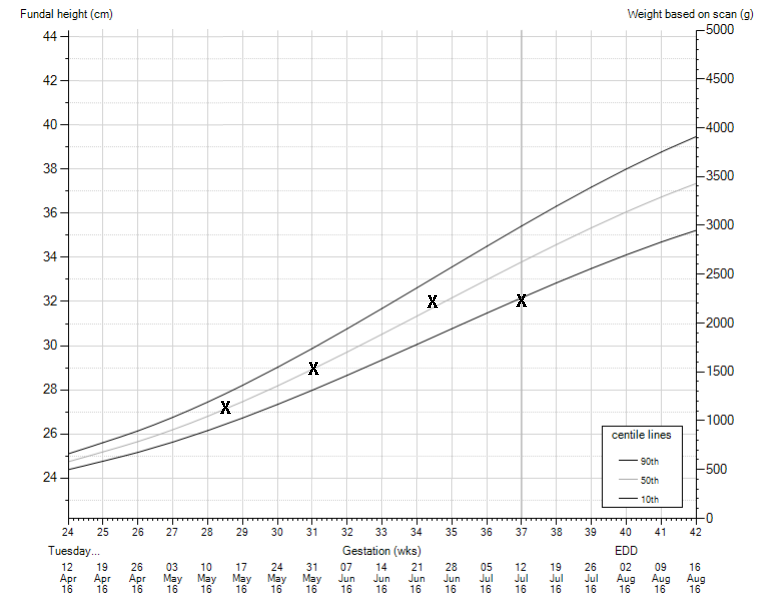
In this example, the measurement is identical in two measurements separated by 2 weeks. We would consider this to be an abnormal pattern, and should prompt referral for ultrasound assessment. Static growth has the same significance whether the original measurement is above the 90th centile, on the 50th, or on the 10th centile.
The potential impaction is static fetal growth, and possibly also reduced liquor volume, both of which are associated with intrauterine death .
Slow Growth
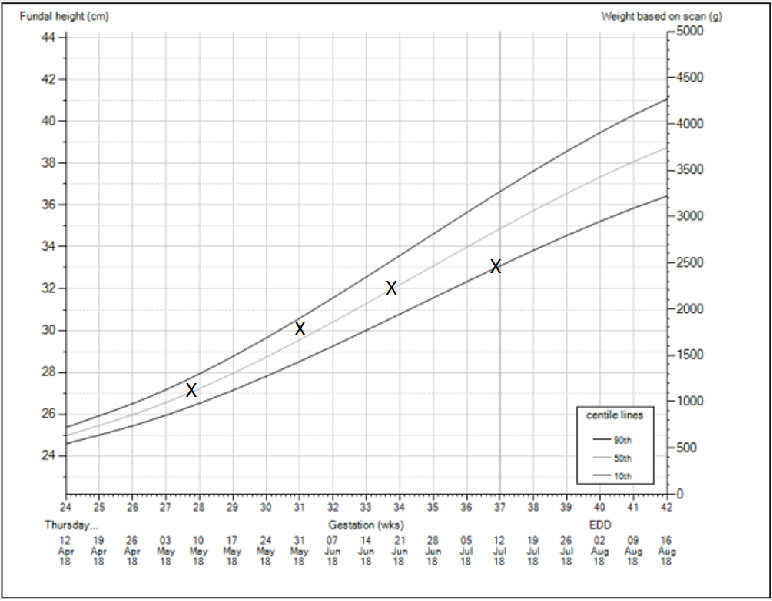
There is to our knowledge no evidence based definition of slow growth. Instead, we recommend using the 90th and 10th centile lines as the upper and lower limits to define ’normal growth’, and visual assessment as to whether the plotted sequential measurements follow a curve, the slope of which is within the 90th and 10th centile line ‘slope limits’. This applies to measurements of fundal height as well as estimated fetal weight (EFW).
We avoid using the term ‘crossing centiles’ as this is often misinterpreted as crossing one of the three lines on the customised growth chart (90th, 50th and 10th). A drop from 45th to 15th centile can be significant yet crosses neither of these lines
This is an indication for referral an ultrasound scan to check the estimated fetal weight ( EFW) and fetal wellbeing. Ideally in this scenario, the EFW measurement should be repeated in 2-3 weeks to assess EFW growth
Plots above the 90th centile
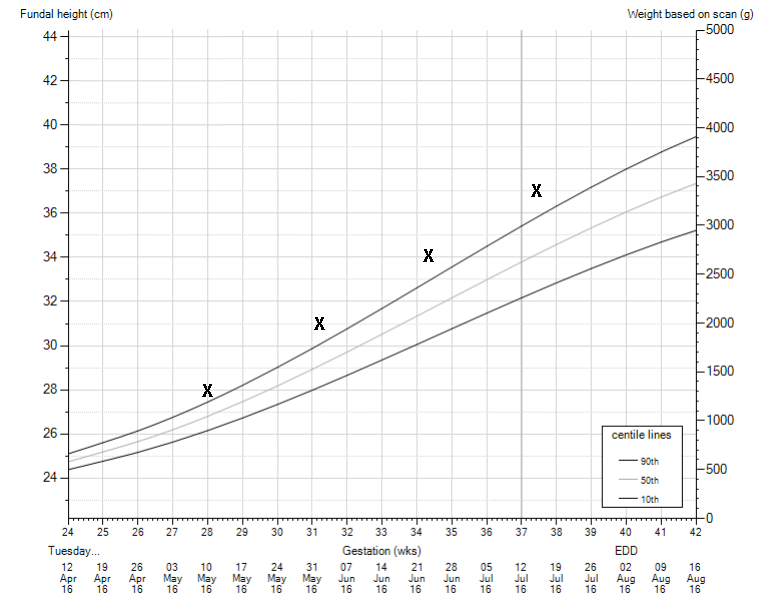
The fundal height measurement is known to have considerable variability, often being above the 90th centile on the customised charts in the 24 – 30 week range. We therefore recommend that an initial measurement above the 90th centile does not prompt ultrasound referral, but is repeated in 2-3 weeks and is only assessed by ultrasound examination if the plot increases steeply which might occur with polyhydramnios (see excessive growth). The emphasis here is on using your clinical judgement, if the circumstances are those where there is a high risk of gestational diabetes, the expectant mother will be offered screening for diabetes with an oral glucose tolerance test (OGGT)
Cases showing a large fundal height will contain some interesting cases with rare complications of pregnancy, but we must remember that the initial observations at 24- 28 weeks are very frequently above the 90th centile, because the customised charts have been produced with the estimated fetal weight primarily in line.
Excessive Growth
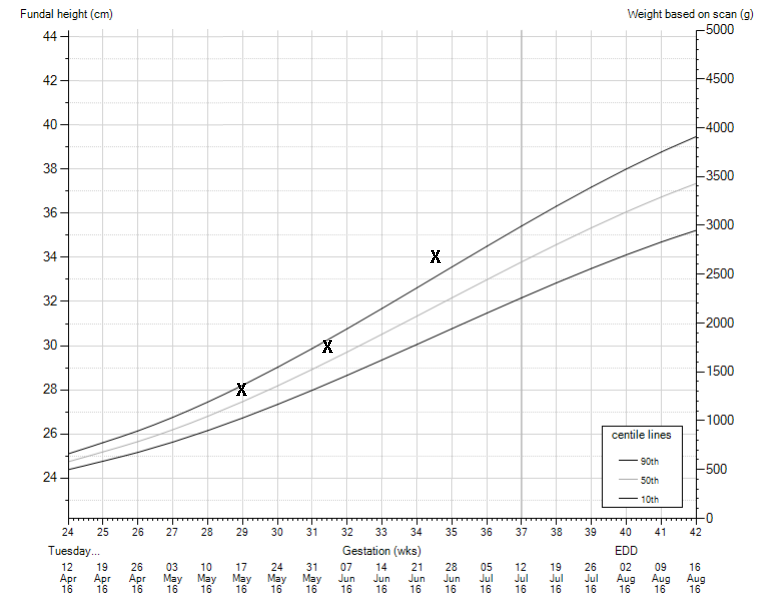
The clinical concerns about large for dates are very much less than small for dates. A large for dates pregnancy might be a first presentation of gestational diabetes, which can present with both a large baby and polyhydramnios
The fundal height measurement is known to have considerable variability, often being above the 90th centile on the customised charts in the 24 – 30 week range. So whilst we recommend that an initial measurement above the 90th centile does not prompt ultrasound referral ( see plots above the 90th centile) however if the trajectory of growth increases steeply (which might occur with polyhydramnios) this does require referral for a scan. The ultrasound assessment will address the issue of fetal size and polyhydramnios, and should prompt a re-evaluation of the fetus for structural anomalies.